|
The History of: THE NEUFELDT AND KUHNKE ARMOURED DIVING SUITAuthor: Ing. J.W.G. de Groot http://www.nautiekdiving.nl published: February 2009 on therebreathersite.nl |
|
|
|
A SHORT HISTORY OF NEUFELDT AND KUHNKE
In 1899 the company was founded by Hans Neufeldt and Karl Kuhnke. In
1905 they took over the firm of Ludwig von Bremen, that distributed,
among other items, the diving equipment of the French concern
Rouquayrol-Denayrouze and renamed the firm Hanseatische Apparatebau
Gesellschaft (HAG). In the world-wide recession period of 1937 the
name of the firm was again changed to: Hanseatische Apparatebau
Gesellschaft Neufeldt and Kuhnke (HAGENUK), then subsequently to:
HAGENUK formerly Neufeldt and Kuhnke. They continued to produce
diving equipment and other items, up to 1960. By 1998 the company
had been taken over by another firm but went bankrupt within a year.
The production facilities, which were mainly concerned with
electronics, were acquired by a foreign group of investors in the
year 2000.
|
|
|
|
THE NEUFELDT AND KUHNKE ARMOURED DIVING SUIT
The first ADS developed by Hanseatische Apparatebau Gesellschaft
(HAG) was generally based on a suit, designed in 1906, by the German
inventor Friedrich Gall. One of the major improvements that HAG
incorporated into the suit was precise manufactured and polished
ball-and-socket joints to provide articulation of the arms and legs.
These ball-and-socket joints were made watertight by a ring-like
rubber skirt that pressed against the steel ball section of the
joint. This rubber seal worked much the same as a human eyelid on
the eyeball. One problem with this design was that as ambient
pressure increased with depth, the rubber skirt sealed down harder
against the steel ball. The greater seal pressure created friction
between the seal and ball, thus limiting joint articulation to
depths less than about |
 |
 |
TECHNICAL DESCRIPTION OF THE NEUFELDT AND KUHNKE ADS
The basic components of the suit are the pressure resistant trunk
and arms and legs. The trunk and the fixed hollow limbs are made
from forged steel. In the two earlier generation of suits, the trunk
was separated into two parts at the waist by a bolted flange. This
flange allowed the diver to don and doff the suit and it was bolted
together and sealed after the diver entered the suit. The latter
generation of suits were entered by means of a detachable hatch that
was sealed with six “T” shaped hinged bolts (akin to a pressure
cooker lid).
Each armoured suit was equipped with a number of thick glass,
pressure resistant view ports that allowed the diver to see down,
left-to-right and overhead.
On
some designs the trunk was attached to a ballast tank which allowed
the adjustment of buoyancy by means of valves inside the suit.
As early as 1913 Neufeldt and Kuhnke received
a patent which described a device for adjusting the buoyancy of
armoured diving suits. This patent consists of several telescopic
tubes that could be pushed out by compressed air (a variable volume
mechanism). If there ever was a practical implementation of this
system, it is unknown.However, with their standard buoyancy
system, water or air could be admitted to the buoyancy tank to raise
or lower the ADS in the water column. With the ballast tank
completely flooded a negative buoyancy of
|
|
The adjustment of buoyancy and the flexibility of the joints gave
the diver a limited vertical, forward-backward and sideways motion.
He could also bend fore and aft to a certain degree and was able to
perform activities in differing orientations.
To provide the fully enclosed diver in the suit with a breathing
mixture, an oxygen rebreather was installed in the trunk of the
suit. This manually controlled rebreather generally consisted of an
oral-nasal mask. The mask hose was attached to a carbon dioxide
scrubber canister and a manually metered oxygen supply. On some
systems the diver inhaled suit air through a one way valve on his
mask. The expired air then flowed through a rubber hose to the
scrubber where the carbon dioxide was absorbed. Mounted in the trunk
of the suit was a pressure gauge on which the diver could read
internal suit pressure. As suit oxygen was consumed and internal
pressure dropped below a certain level, the diver would manually
open an oxygen valve to adjust suit oxygen to an acceptable level
again.
The armoured diving dress was connected to the surface by a steel cable and communications cable. In case of an emergency the diver had the ability, from inside the suit, to detach the ADS from the two cables and float to the surface. Further, he had the option of adjusting the suit’s ballast tanks to where he could remain at the surface until retrieved. |
|
 oxygen rebreather simular to the units used in the N&K suits |
|
SEA TRIALS OF THE NEUFELDT AND KUHNKE ARMOURED SUIT
A couple of years ago I came across an original photo album with a
handwritten report in the German language describing trials of the
Neufeldt and Kuhnke ADS. Some of the most interesting photos
(although not of the best quality) are added to this article.
The following is a textual translation of the report:
To test the resistance of the closeness of the equipment, trials
were held in depths of 93, 142, 75 and
After a few minor repairs the equipment shows reliability and is
watertight. On 27.09.1916 the inventor dives in presence of the
representatives of the finance department, Klein and Fischer. To a
depth of
On 29.09.1916 the inventor and his – not as a diver trained –
assistant, dive in presence of the Privy Council, Baron von
Gemmingen-Guttenberg to
The inventor dives again on 06.10.1916 to
|
|
DIFFERENT GENERATIONS OF NEUFELDT AND KUHNKE SUITS
Except minor variations we can distinguish three different types of
Neufeldt and Kuhnke suits. |
|
 |
FIRST GENERATION [(1913) 1917 – 1923)]
The trunk was separated at the waist into an upper and lower torso
joined by a bolted flange. The upper torso contained the buoyancy
tank and the arms. The top of the torso was provided with two
unprotected air bottles to regulate buoyancy. At the end of each
arm, which was composed of three ball and socket joints, there was
originally mounted an artificial glove-like mechanism, that could be
manipulated from inside the suit. This approach quickly proved to be
impractical, as it was difficult to articulate and even at moderate
depths it leaked excessively. Latter, the glove mechanism was
replaced by a system of grippers (what we call today: end
effectors). The legs, each also divided into three ball and socket
joints, similar to the arms, were attached to the lower part of the
trunk (lower torso).
The breathing provision for the diver was installed inside the
trunk, as was the telephone and control system. The suit was
provided with four view ports.
|
|
SECOND GENERATION [1923 – 1929]
This generation of ADS suits was more or less a variation of the
equipment produced previously. The shape of the suit was more
streamlined due to an improved production method of the trunk. The
suit was still composed of the upper and lower torso, separated at
the waist by a bolted flange seal, like in the earlier model. Latter
types have a more rounded head with the buoyancy tank on the dorsal
area. The arms and legs were still assembled with three ball and
socket joints each. To
avoid fouling of the diver by the unprotected air tanks, and their
accompanying piping, the tanks and cylinders were covered. The
history is unclear as to when the shape modification of the upper
torso took place.
Incidental to this chronology is that in November 1925 the German
diver Otto Kraft established a record with a Neufeldt and Kuhnke
armoured suit during a working dive to a depth of |
 |
 |
THIRD GENERATION [1929 – 1940]
In the early 1920s, the Frenchman Alain Terme acquired a Neufeldt
and Kuhnke suit for undertaking attempts to locate several
shipwrecks with valuable cargoes. One of them was the
The initiative to simplify the armoured suit to increase its
practicality and functionality was created by SORIMA. This company
had employed the Neufeldt and Kuhnke suits of differing types
(second and third generation) for recovering valuable cargoes from
several shipwrecks in deep water. (e.g. Washington, |
|
Early diving operations with armoured diving suits at great depths,
such as those carried out by SORIMA, had conclusively shown that
nine/tenths of the work for which even the best armoured suit was
capable, could be performed equally well by a simple observation
chamber like that designed by Robert H. Davis in 1912. It was
evident that in many cases the diver in his armoured suit was merely
an observer and director of operations. He stood by and gave orders
through the telephone to the surface crew with regards to placing of
explosives or the maneuvering of a grab.
In the late 1920s and in the early 1930s (i.e.1928 – 1934)
Neufeldt and Kuhnke and
Galeazzi, relying on the considerable field experience put together
by SORIMA divers, largely cooperated to manufacture improved and
more reliable armoured suits. In 1935 the Galeazzi Company started
their own ADS which in 1938 established the world depth record of |
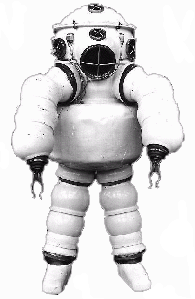 |
|
SOURCES AND LITERATURE |
|
|
|
Different information |
|
Robert H. Davis |
Deep Diving and Submarine Operations |
|
Edward Ellsberg |
Men under the Sea |
|
Allan Grothall |
Wealth from the Sea |
|
Hans Gunther |
Die Eroberung der Tiefe |
|
|
Ironsuit: The History Of The Atmospheric Diving Suit |
|
Michael Jung |
Die Entwicklung der Tauchtechnik in Deutschland bis zum 20.jahrhundert |
|
Pierre de Latil and Jean Rivoire |
Man and the Underwater World |
|
Robert E.Marxs |
Into
the Deep |
|
|
Different papers and pictures |
|
Hermann Stelzner |
Tauchertechnik |
|
David Scott |
Seventy Fathoms Deep |
| The above imformation is published with the kind permission of Ing. J.W.G. de Groot of Nautiekdiving | |
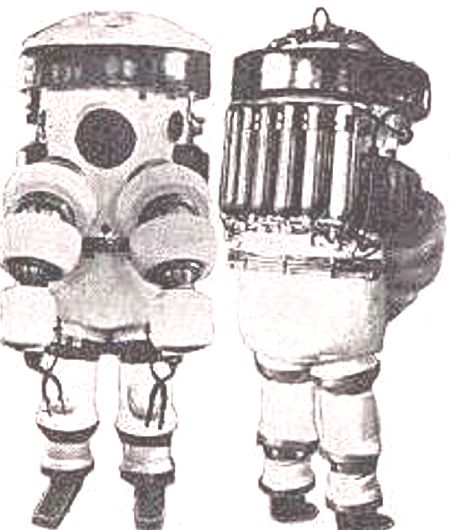 |
|
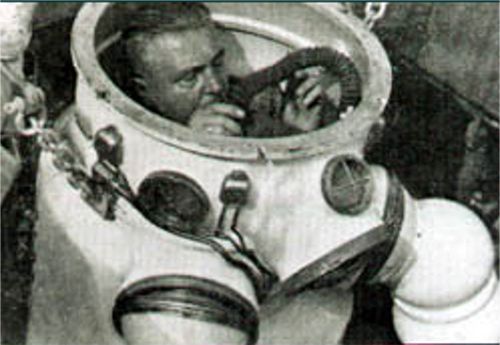 |
|
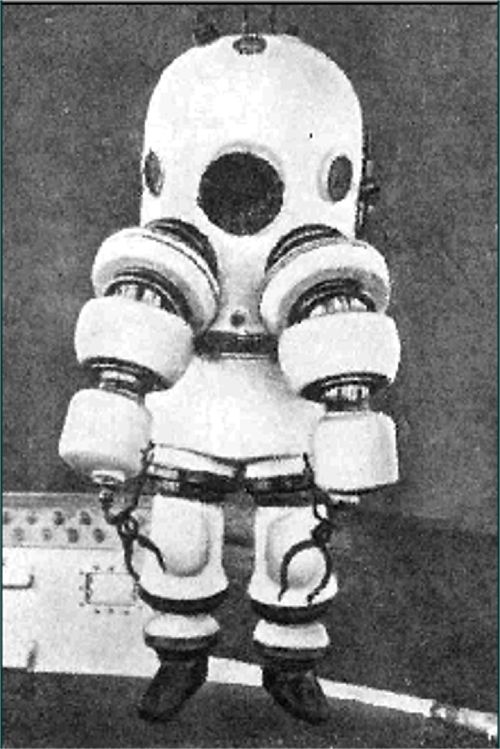 |
|
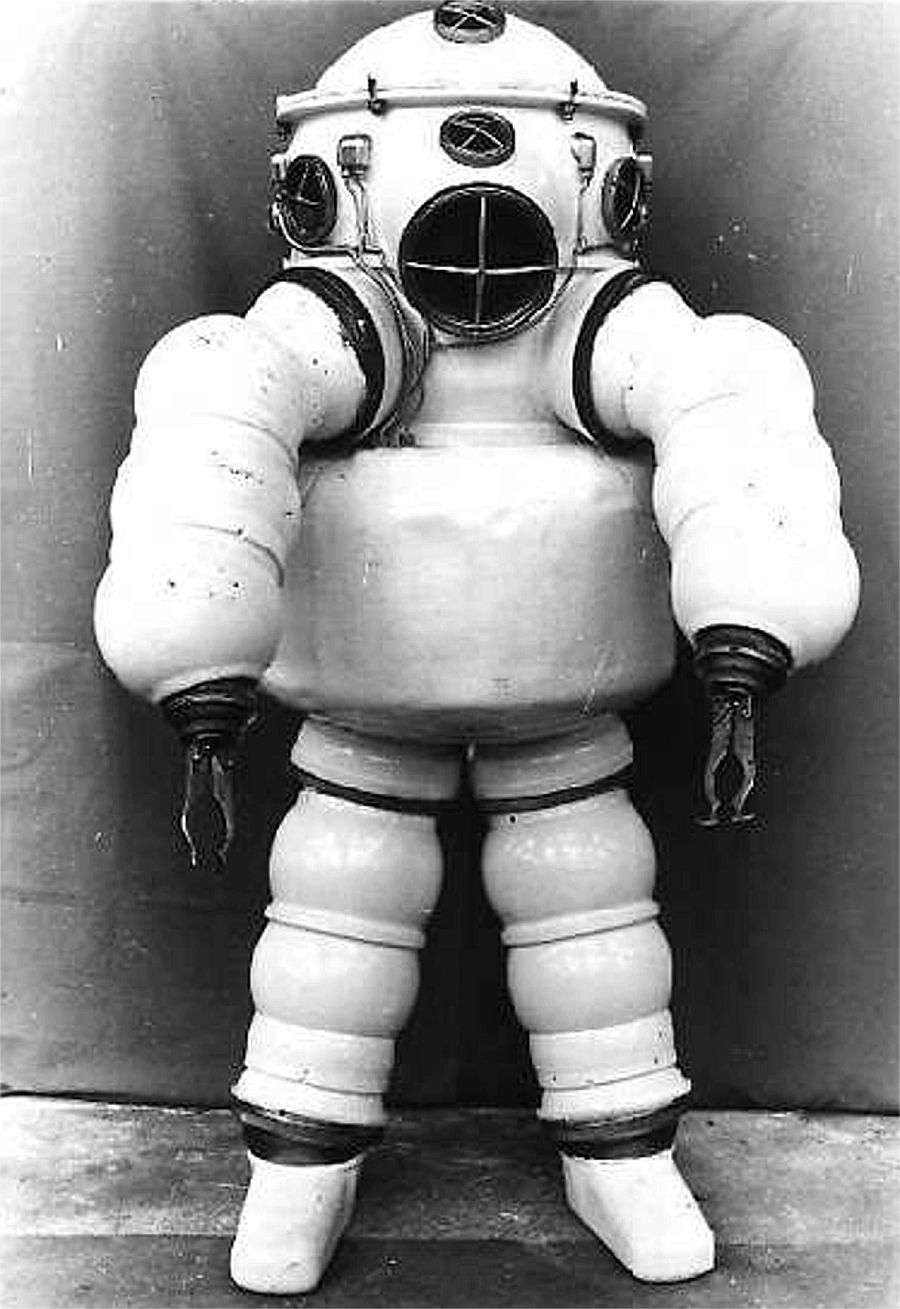 |
|
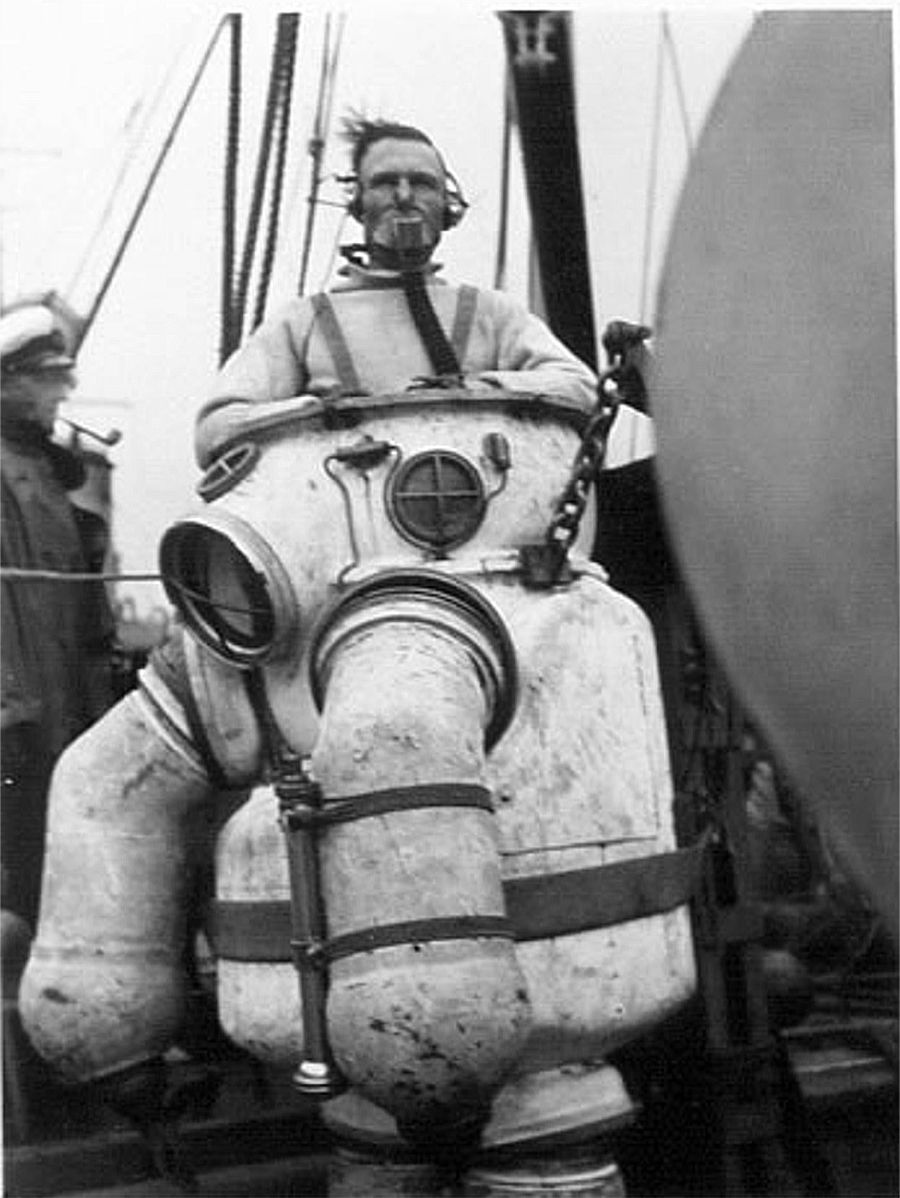 |
|
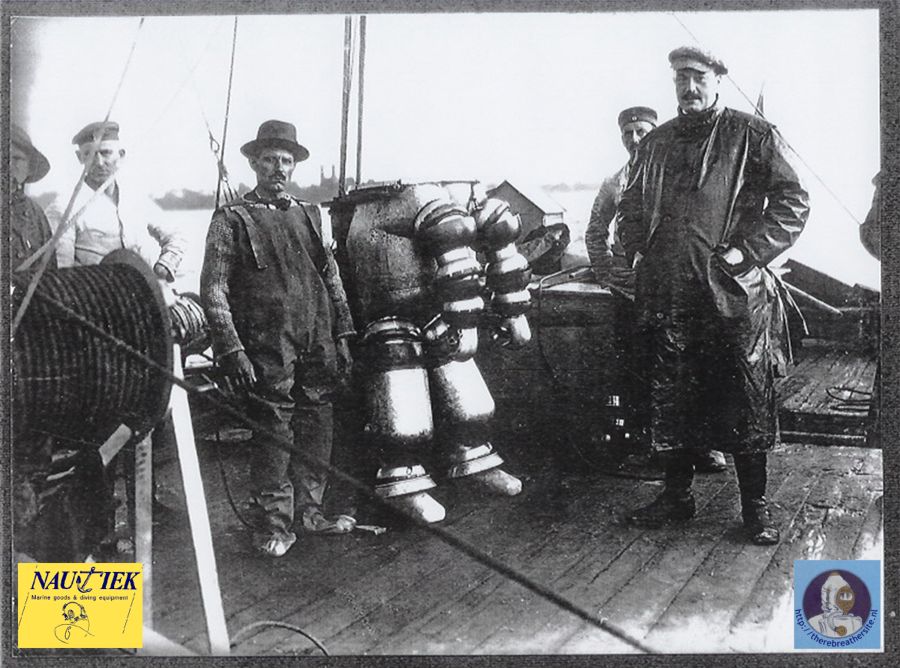 |
|
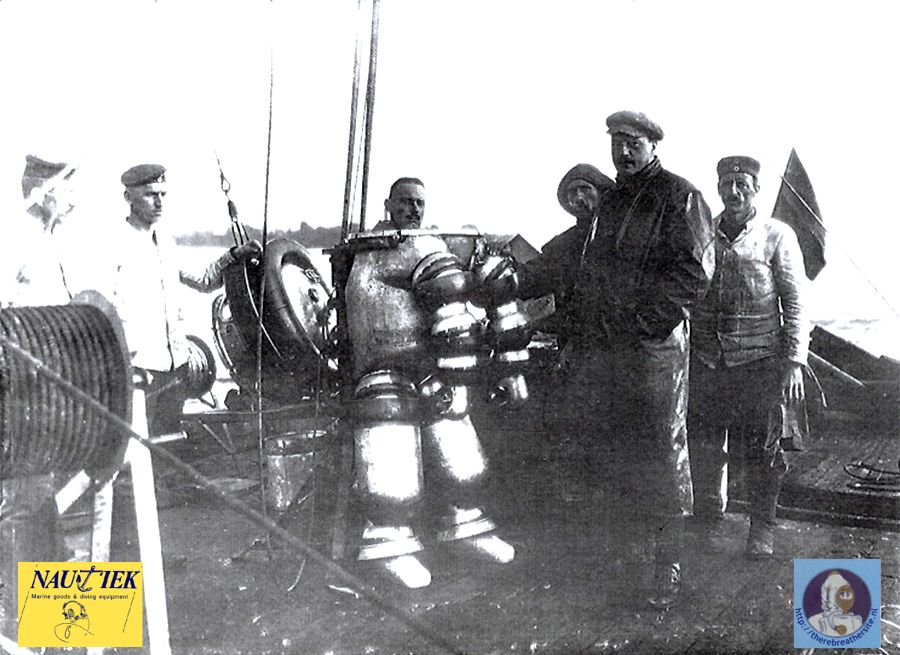 |
|
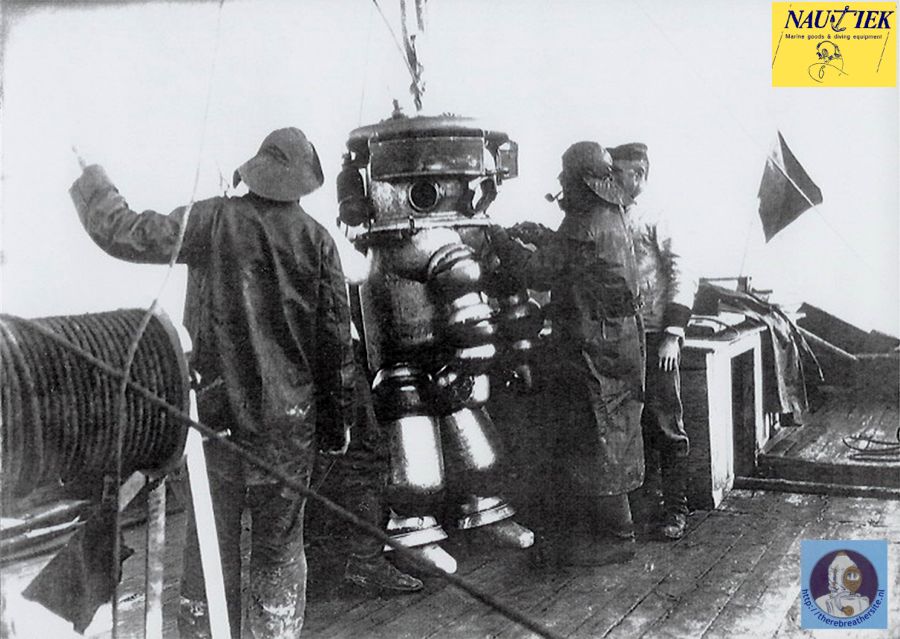 |
|
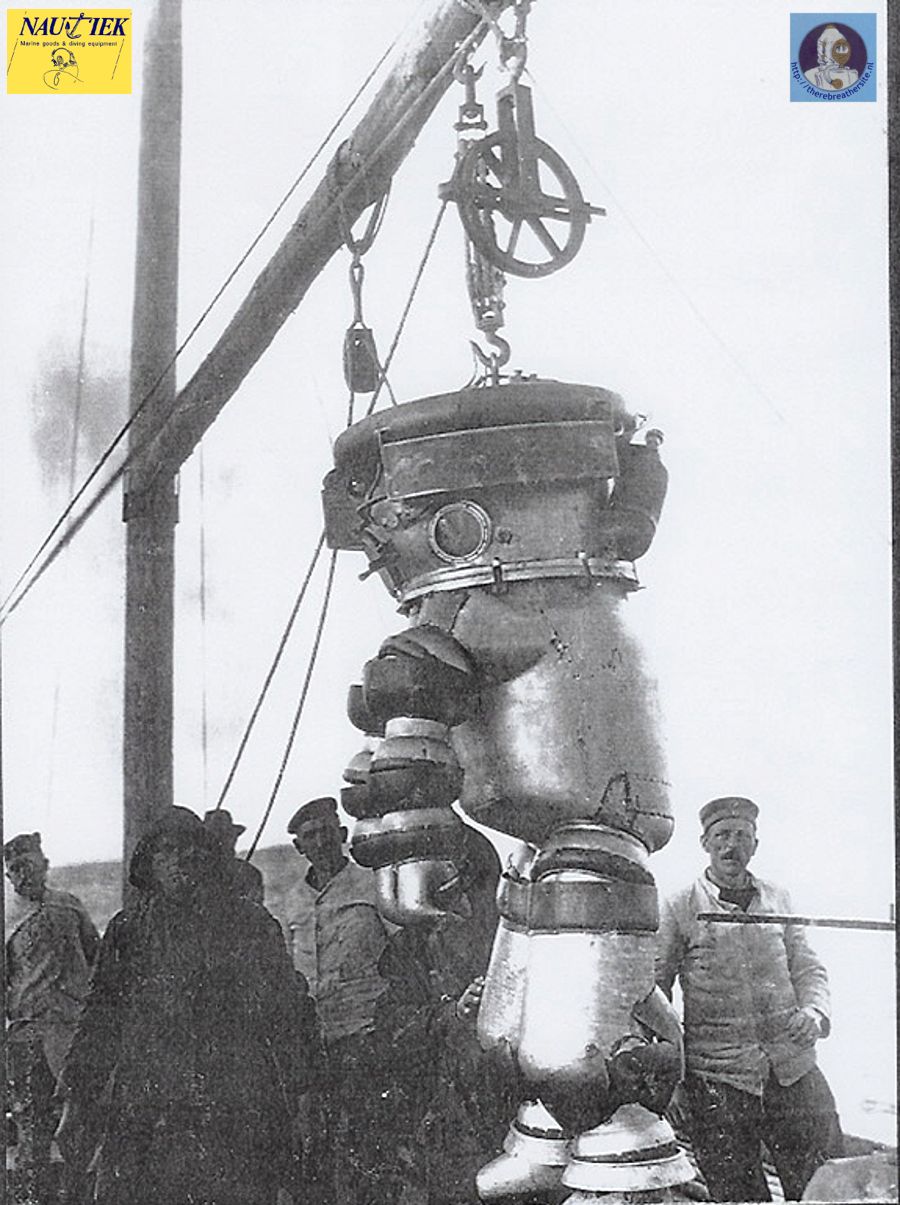 |
|
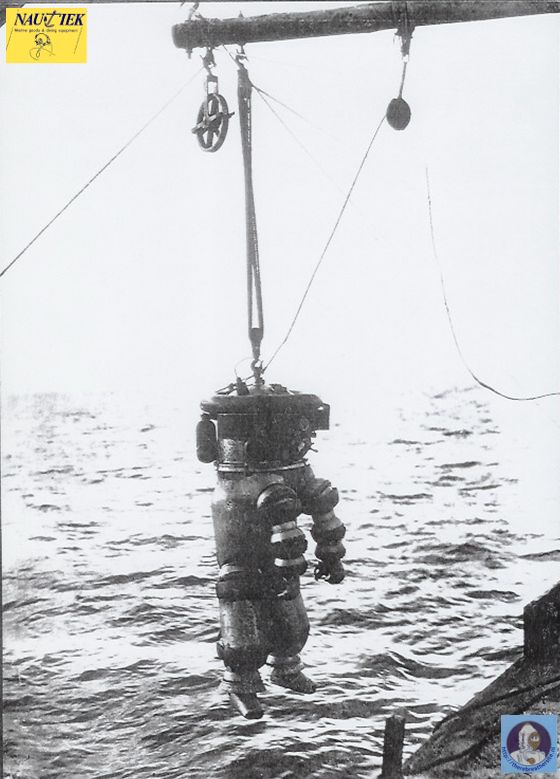 |
|
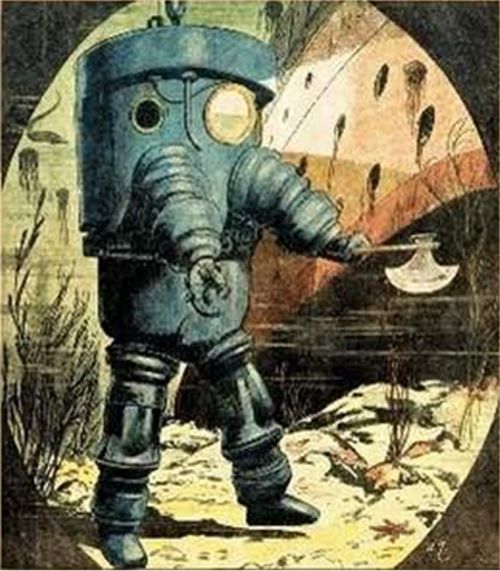 |
|
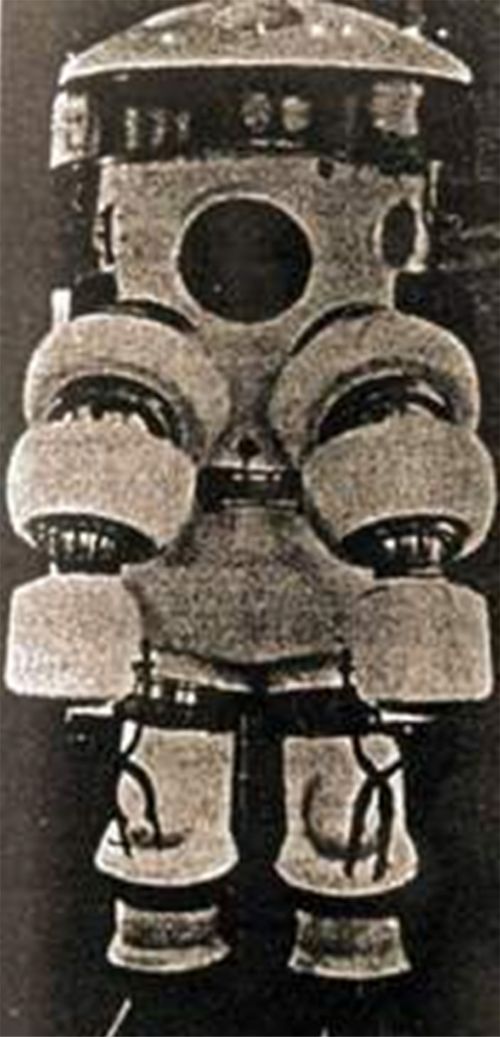 |
|
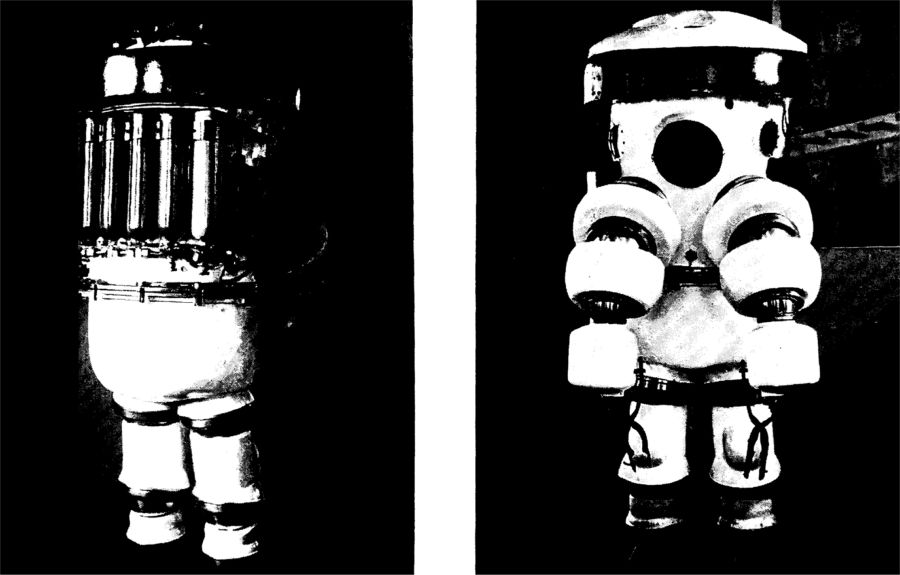 |
|
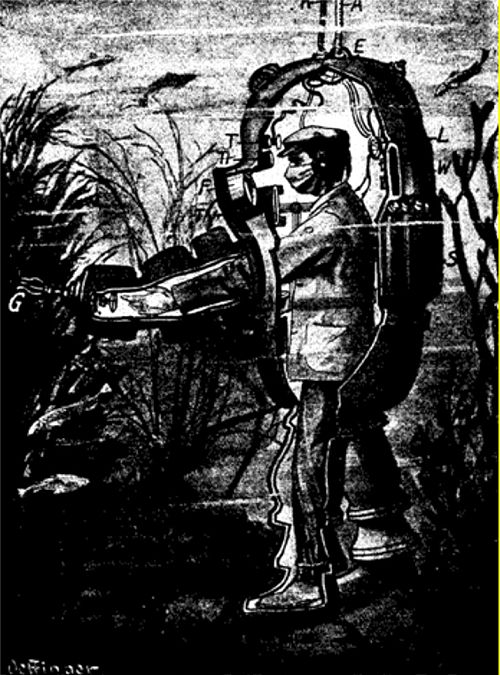 |
|
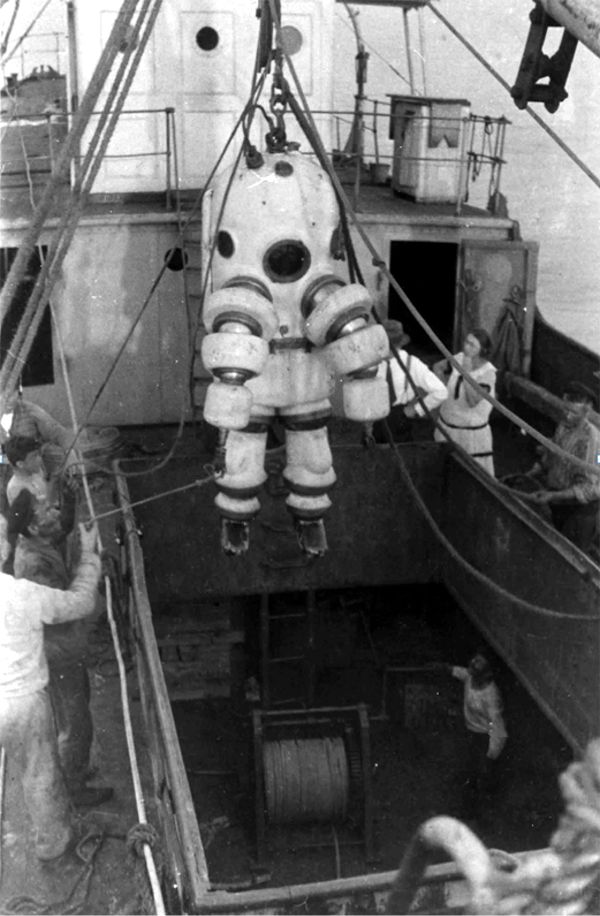 |
|
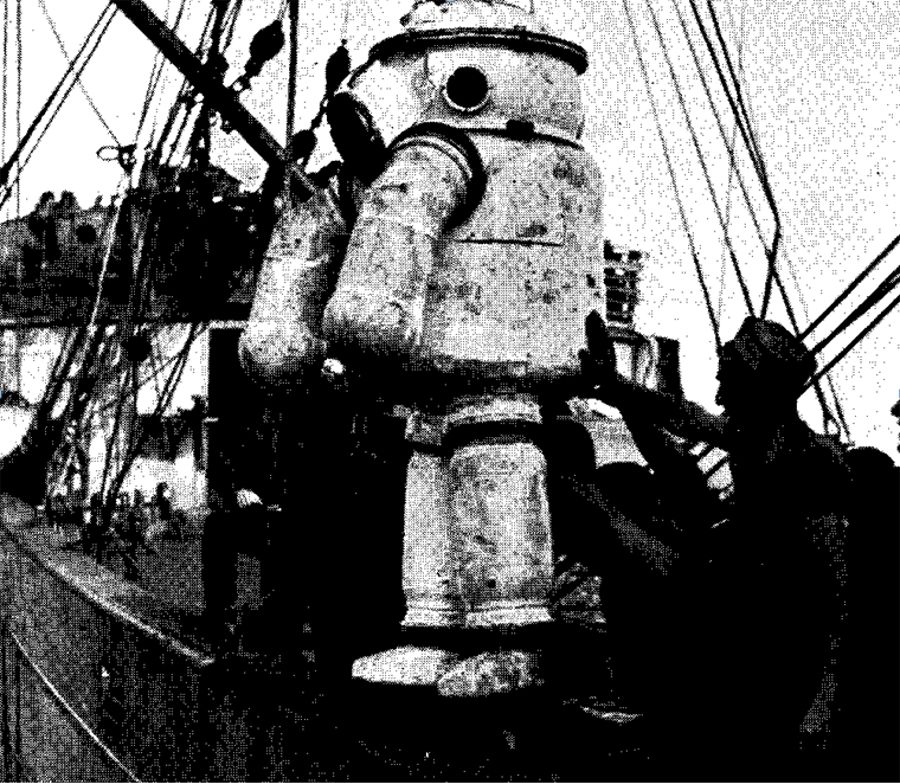 |
|
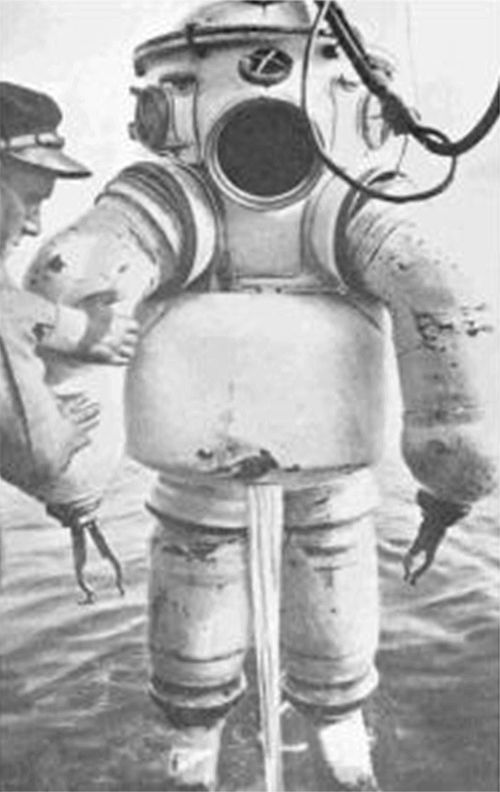 |
|
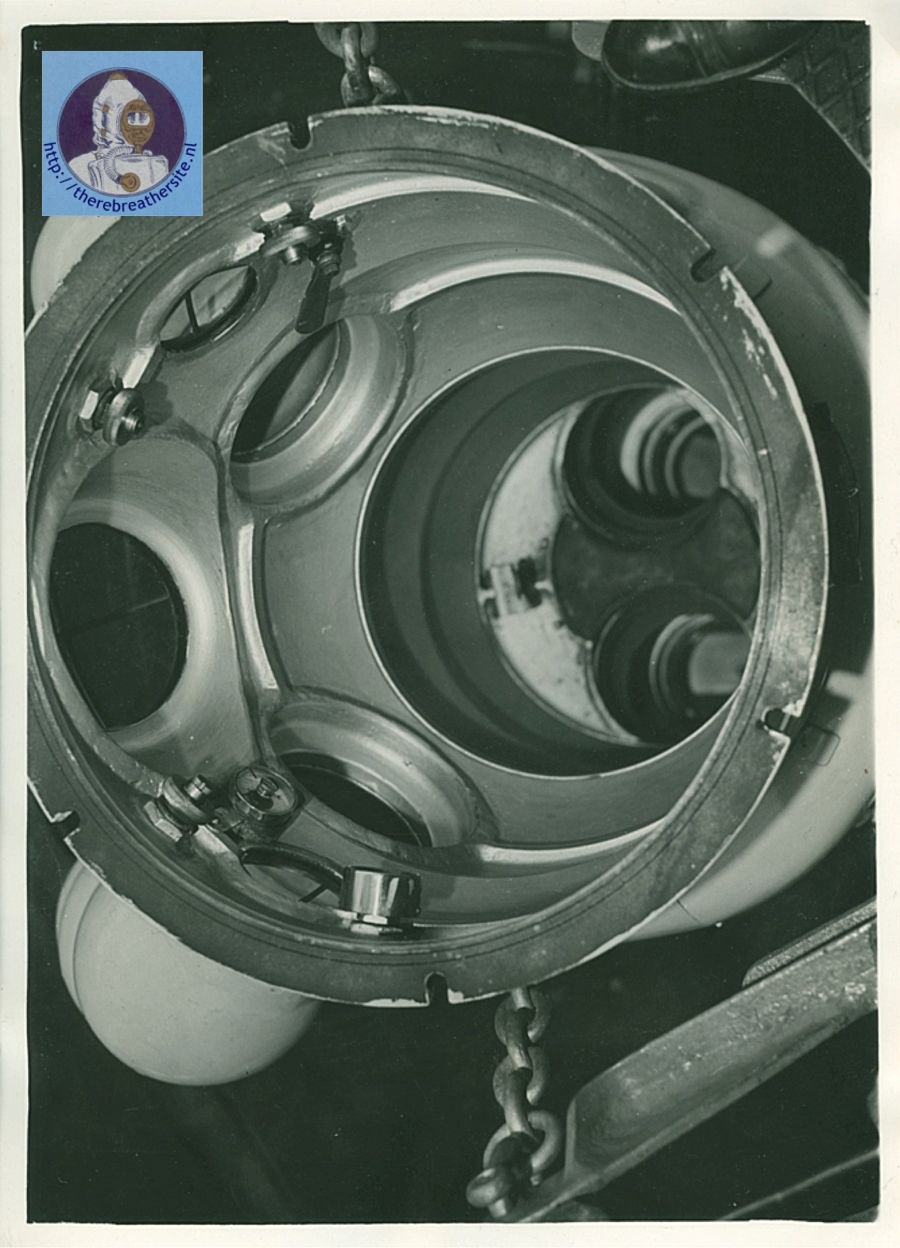 |
|
| unique picture of the inside of a N&K suit | |
| Neufeldt and Kuhnke obtained numerous patents in differt countries in the world. It is a true study to read all the patents they had. | |
| Austria: 70712, 75161, 75162, 75163, 759965, 80711, 80742, 81428, 91664, 93914 | |
| Germany: 292015, 295765, 297016, 297658, 297659, 301434, 302732, 302763, 303472, 310843, 324842, 326495, 330117, 331365, 334692, 334693, 336127, 414562, 479563 | |
| United Kingdom: 148432, 148433, 148434, 148968, 148970, 285430 | |
| France: 22090, 472259, 512112, 515525 | |
| USA: 1183914 | |
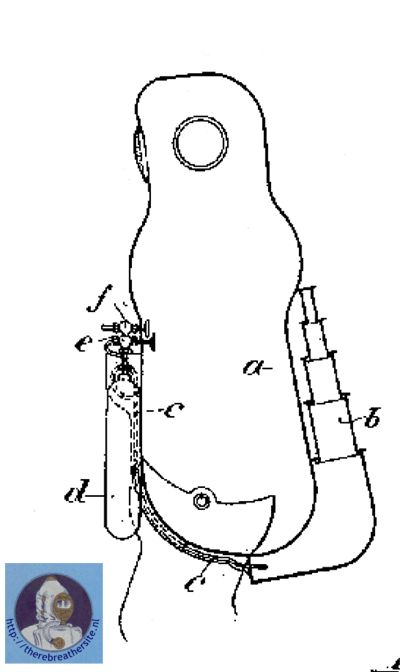 |
|
| hydraulic trim system | |
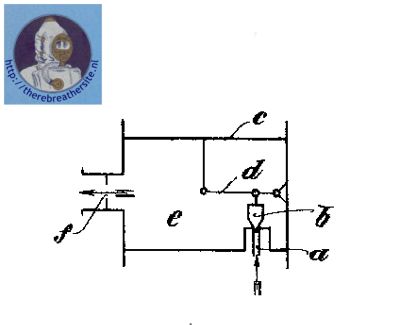 |
|
| demand regulator 1913 (!) oxygen | |
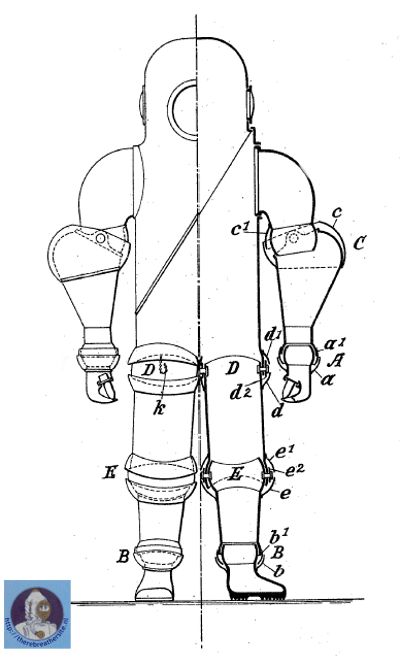 |
|
| protection of the ball-and-socket joints | |
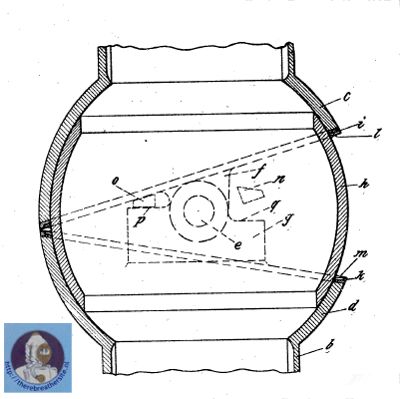 |
|
| ball-and-socket joints | |
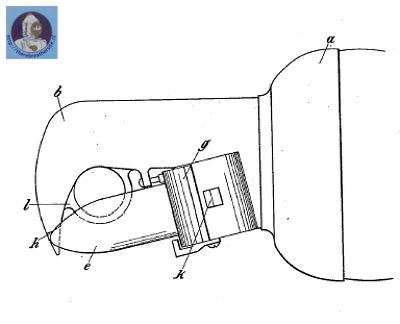 |
|
| PLIERS | |
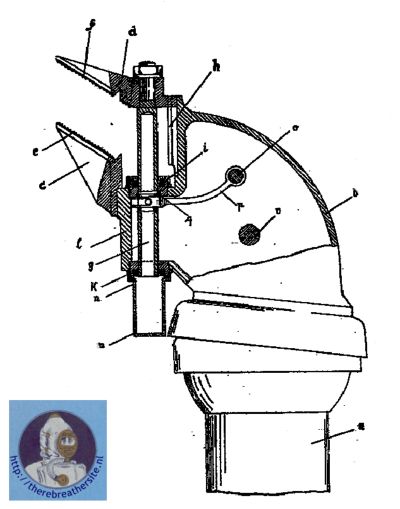 |
|
| WRENCH | |
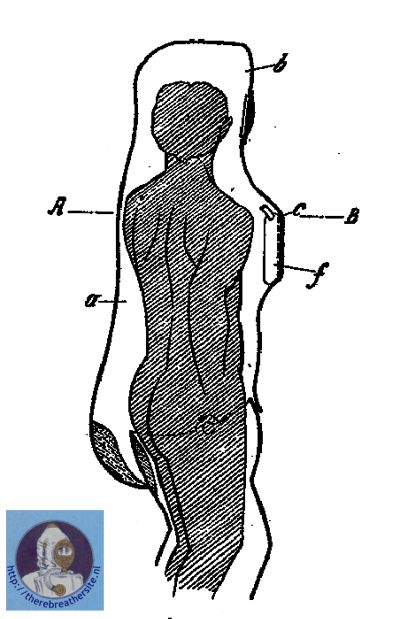 |
|
| POSIBILITY TO RETRACT AN ARM FROM THE SUIT | |
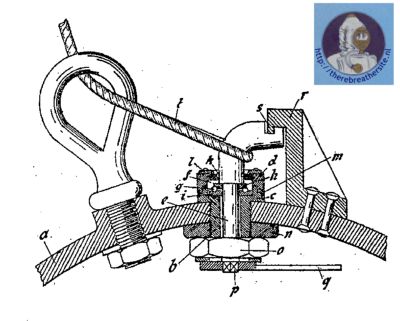 |
|
| release system for the rope | |
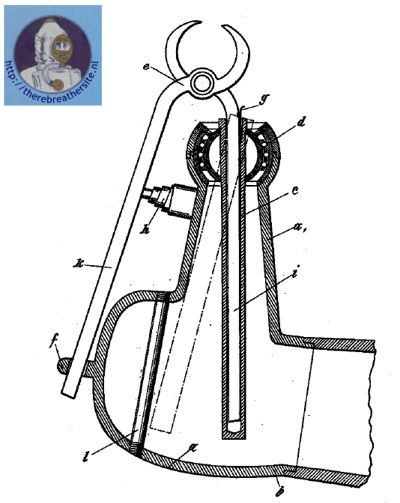 |
|
| pliers | |
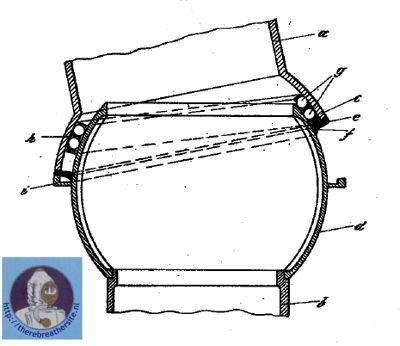 |
|
| different models ball-and-socket joints | |
| February 2009 | |
| Please sign my Guestbook | |
| Email: jw.bech@quicknet.nl | |
Neufeldt und Kuhnke, a German company from Kiel was the first producer of atmospheric diving suits produced in lager numbers. The company obtained a large number of patents and sold their suits during 27 years! I am very pleased that my good friend Jan de Groot of Nautiek diving in the Netherlands studied this company during many years and wrote a fantastic historical review about N&K. I am very pleased Jan allowed me to publish his work on my website. This article is the most comprehensive and detailed article about the history of N&K.
Menu Atmospheric suits
Updates
Speedmenu
Search page
Webshop
Home
GO BACK TO
ATMOSPHERIC
DIVING SUITS.
Mainmenu:
Search this Website
Information about RB
Photo galleries
Historical Information
Links & Downloads
Reviews
Homebuilders
Electronics
Updates, speed menu
Web shop
Reviews SC rebreathers
Reviews CC rebreathers
RB’s through the ages
Inspiration rebreather
Database Oxygen RB’s
Database Semiclosed RB’s
Updates
Speed menu
Search this web
